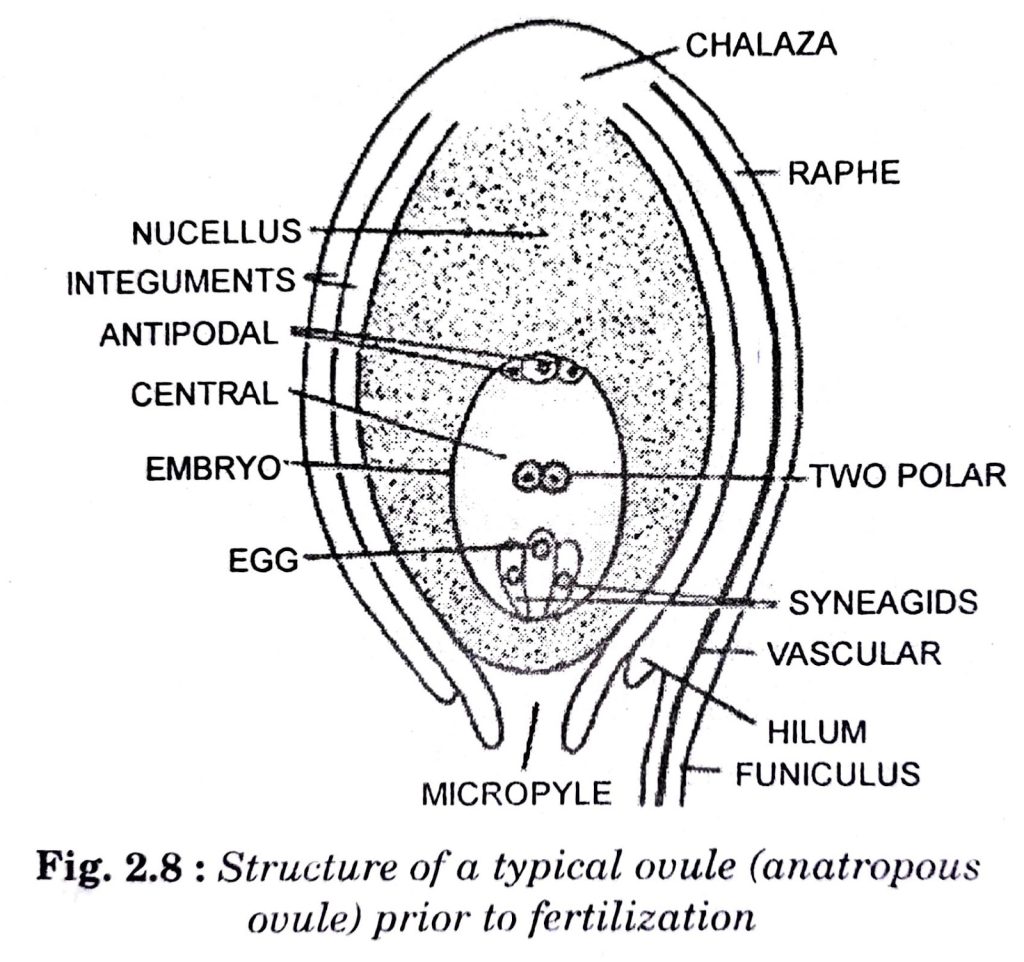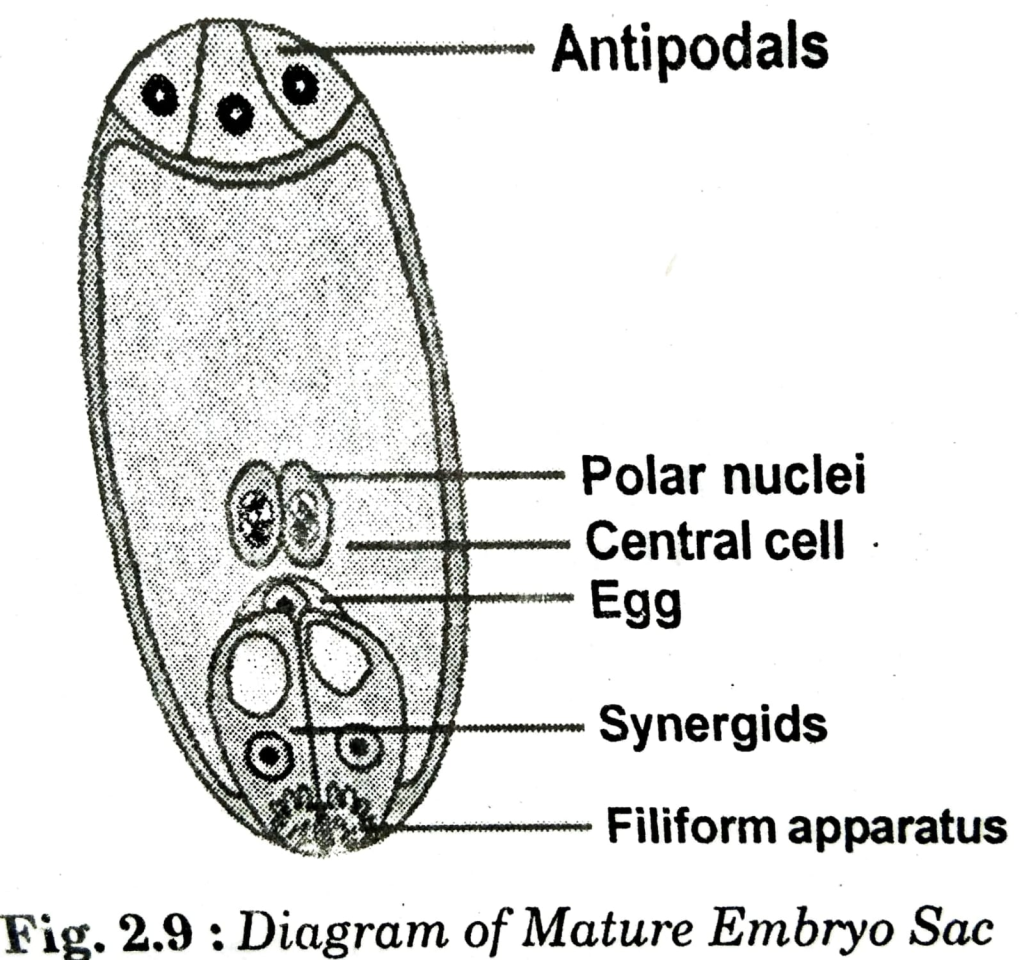NCERT Class 12 Biology Chapter 2 Sexual Production in Flowering Plants Solutions to each chapter is provided in the list so that you can easily browse through different chapters NCERT Class 12 Biology Chapter 2 Sexual Production in Flowering Plants and select need one. NCERT Class 12 Biology Chapter 2 Sexual Production in Flowering Plants Question Answers Download PDF. NCERT Biology Class 12 Solutions.
NCERT Class 12 Biology Chapter 2 Sexual Production in Flowering Plants
Also, you can read the NCERT book online in these sections Solutions by Expert Teachers as per Central Board of Secondary Education (CBSE) Book guidelines. CBSE Class 12 Biology Solutions are part of All Subject Solutions. Here we have given NCERT Class 12 Biology Chapter 2 Sexual Production in Flowering Plants Notes, NCERT Class 12 Biology Textbook Solutions for All Chapters, You can practice these here.
Sexual Production in Flowering Plants
Chapter: 2
BIOLOGY
UNIT – I REPRODUCTION
TEXT BOOK QUESTIONS ANSWERS
Q. 1. Name the parts of an angiosperm flower in which development of male and female gametophyte take place.
Ans: Male gametophyte or pollen grain develops inside the anther and female gametophyte or embryo sac develops inside nucellus of ovule.
Q. 2. Differentiate between microsporogenesis and megasporo- genesis. Which type of cell division occurs during these events? Name the structures formed at the end of these two events.
Ans: Microsporogenesis:
1. It is the process of formation of microspore tetrads from a microspore mother cell.
2. It occurs inside the pollen sac of the anther.
Megasporogenesis:
1. It is the process of the formation of four megaspores from a megaspore mother cell.
2. It occurs inside the nucellus of ovule. Both microsporogenesis and Megasporo-genesis have meiosis or reduction division which results in the formation of haploid gametes from the microspore and mother cells.
Microsporogenesis results in the formation of haploid microspores from a diploid microspore mother cell while Megasporogenesis results in the formation of haploid megaspores from a diploid megaspore mother cell.
Q. 3. Arrange the following terms in the correct developmental sequence:
Pollen grain, sporogenous tissue, microspore tetrad, pollen mother cell, male gametes.
Ans: The correct development sequence is as follows:
Sporogenous tissue – pollen mother cel l- microspore tetrad – Pollen grain – male gametes.
Q. 4. With a neat, labelled diagram, describe the parts of a typical angiosperm ovule.
Ans: An ovule is a female megas-porangium where the formation of megaspores takes place.

Various parts of an ovule are:
Funiculus: Ovule is attached to placenta by a stalk-like structure called funiculus.
Hilum: It is the point where body of the ovule is attached to funiculus.
Integuments: They are the outer layers surrounding the ovule.
Micropyle: It is a narrow pore formed by the projection of integuments.
Nucellus: It is a mass of the parenchymatous tissue surrounded by integuments from the outside. Embryo sac is located inside the nucellus.
Chalazal: It is the based swollen part of the nucellus from where integuments originate.
Q. 5. What is meant by monosporic development of female gametophyte?
Ans: Female gametophyte or the embryo sac develops from a single functional megaspore. This is known as monosporic development of female gametophyte.
Q. 6. With a neat diagram explain the 7-celled, 8-nucleate nature of the female gametophyte.
Ans.

Embryo Sac has 7 cells in a characteristic distribution.
1. Egg apparatus:
• Three cells are present at the micropylar mend and form egg apparatus.
• The egg apparatus consists of two synergids and one egg cell.
• The synergids have cellular thickenings at the micropylar tip called filiform apparatus which guide the pollen tubes into synergid.
2. Antipodal cells:
• Three cells are present at the chalazal end and form antipodal cells.
• Antipodal cells are vegetative cells which degenerate or absorb nutrition from surrounding cells.
3. Central cell:
• One cell present in center of embryo sac forms large central cell.
• Central cell has two polar nuclei.
• Central cell has cytoplasm rich in reserve food and Golgi bodies.
Q. 7. What are chasmogamous flowers? Can cross-pollination occur in cleistogamous flowers? Give reasons for your answer.
Ans: Chasmogamous flowers are open flowers with exposed anthers and stigma. Cross-pollination cannot occur in cleistogamous flowers because of closed flowers.
Q. 8. Mention two strategies evolved to prevent self-pollination in flowers.
Ans: Two strategies evolved to prevent self-pollination in flowers are: self incompatibility and unisexual flowers.
Q. 9. What is self-incompatibility? Why does self-pollination not lead to seed formation in self-incompatible species?
Ans: SELF-INCOMPATIBILITY: This is a genetic mechanism to prevent self-pollen (from the same flower or other flowers of the same plant) from fertilizing the ovules by inhibiting pollen germination or pollen tube growth in the pistil. As a result, no seed formation takes place.
Q. 10. What is bagging technique? How is it useful in a plant breeding programme?
Ans: Emasculated flowers are wrapped in bags to prevent pollination by unwanted pollen grains. This process is called bagging. It is useful in plant breeding programme as it ensures pollination by pollen grains of only desirable plants.
Q. 11. What is triple fusion? Where and how does it take place? Name the nuclei involved in triple fusion.
Ans: Triple fusion is the fusion of the male gamete with two polar nuclei inside the embryo sac of the angiosperm. It takes place inside the embryo sac. One male gamete fuses with the nucleus of egg cell and forms the zygote (syngamy). The other male gamete fuses with two polar nuclei present in the central cell to form a triploid primary endosperm nucleus. Since this process involves the fusion of three haploid nuclei, it is known as triple fusion. It results in the formation of the endosperm. One male gamete nucleus and two polar nuclei are involved in this process.
Q. 12. Why do you think the zygote is dormant for sometime in a fertilized ovule?
Ans: The zygote remains dormant for some time because zygote divides only after some amount of endosperm is formed and endosperm provides food for the developing embryo.
Q. 13. Differentiate between:
(a) Hypocotyl and epicotyl.
Ans:
| Hypocotyl: | Epicotyl: |
| 1. Portion of embryonal axis which lies below the cotyledon in a dicot embryo is called hypocotyl. | 1. Portion of the embryonal axis which lies above the cotyledon in a dicot embryo is called epicotyl. |
| 2. It terminates with the radicle. | 2. It terminates with the plumule. |
(b) Coleoptile and coleorhiza.
Ans: Coleoptile: It is a conical protective sheath that encloses plumule in a monocot seed.
Coleorhiza: It is an undifferentiated sheath that encloses radicle and root cap in a monocot seed.
(c) Integument and testa.
Ans: Integument: It is the outermost covering of an ovule. It provides protection to it.
Testa: It is the outermost covering of seed.
(d) Perisperm and pericarp.
Ans: Perisperm: It is the residual nucellus which persists.
It is present in seeds like beet, black pepper.
Pericarp: It is the ripened wall of a fruit which develops from ovary wall.
Q. 14. Why is apple called a false fruit? Which part(s) of the flower forms the fruit?
Ans: Fruits derived from the ovary and other accessory floral parts are called false fruits. Thalamus forms the edible fruit in apple. Hence, it is a false fruit.
Q. 15. What is meant by emasculation? When and why does a plant breeder employ this technique?
Ans: Emasculation is the process of removing anthers from bisexual flowers before anther dehiscence without affecting the female reproductive part (pistil). It is done in artificial hybridization for crop improvement by plant breeders.
Q. 16. If one can induce partheno-carpy through the application of growth substances, which fruits would you select to induce parthenocarpy and why?
Ans: Parthenocarpy is the process of developing fruits without fertilization or seed formation. Therefore, the seedless varieties of economically important fruits such as orange, banana, grapes etc are produced using this technique.
Q. 17. Explain the role of tapetum in the formation pollen-grain wall.
Ans: Tapetum is the innermost layer of the microsporangium. It nourishes the developing pollen grains. It also produces the exine layer of the pollen grains.
Q. 18. What is apomixis and what is its importance?
Ans: Apomixis is seed production without fertilisation. It plays an important role in hybrid seed production. Apomixis prevents the loss of specific characters in the hybrid. It is cost-effective method for producing seeds.

Hi! my Name is Parimal Roy. I have completed my Bachelor’s degree in Philosophy (B.A.) from Silapathar General College. Currently, I am working as an HR Manager at Dev Library. It is a website that provides study materials for students from Class 3 to 12, including SCERT and NCERT notes. It also offers resources for BA, B.Com, B.Sc, and Computer Science, along with postgraduate notes. Besides study materials, the website has novels, eBooks, health and finance articles, biographies, quotes, and more.


